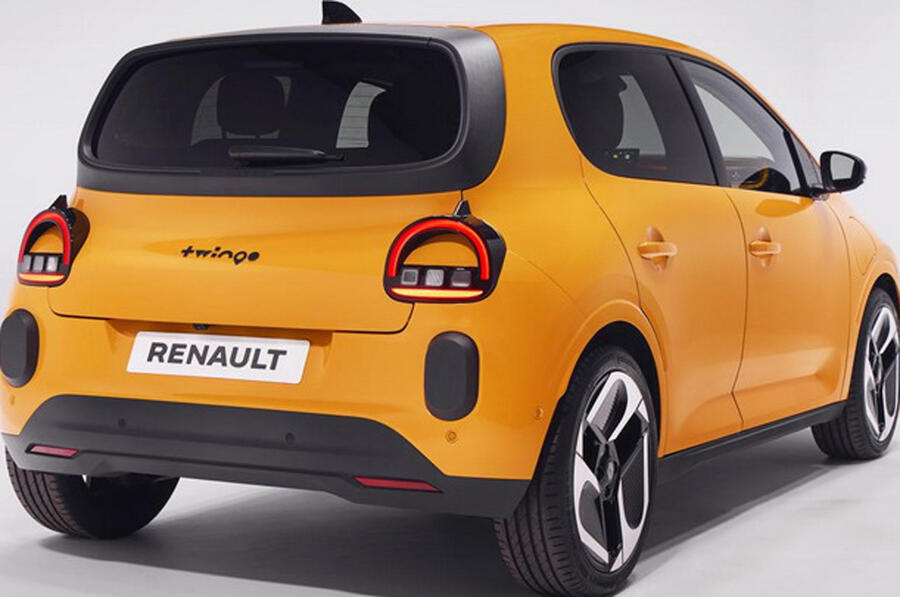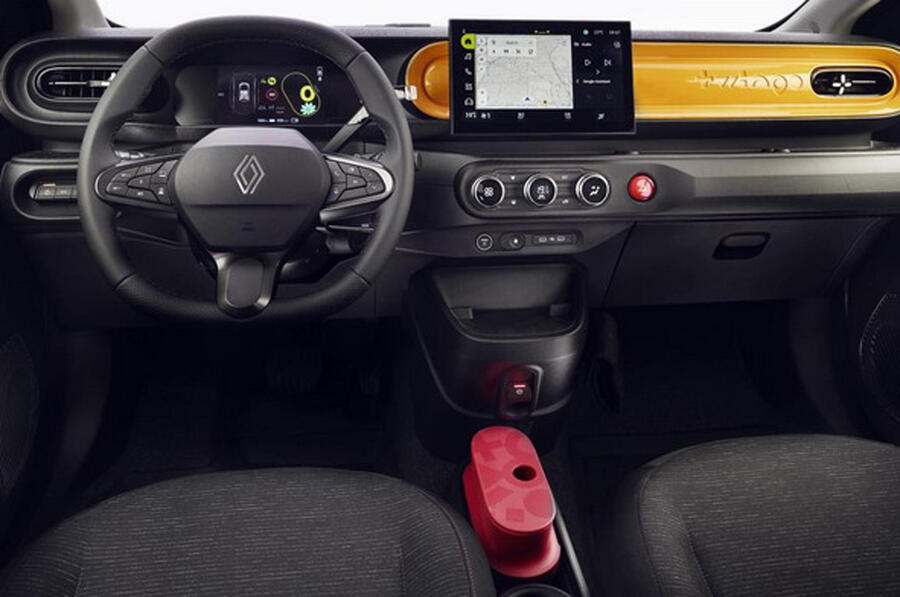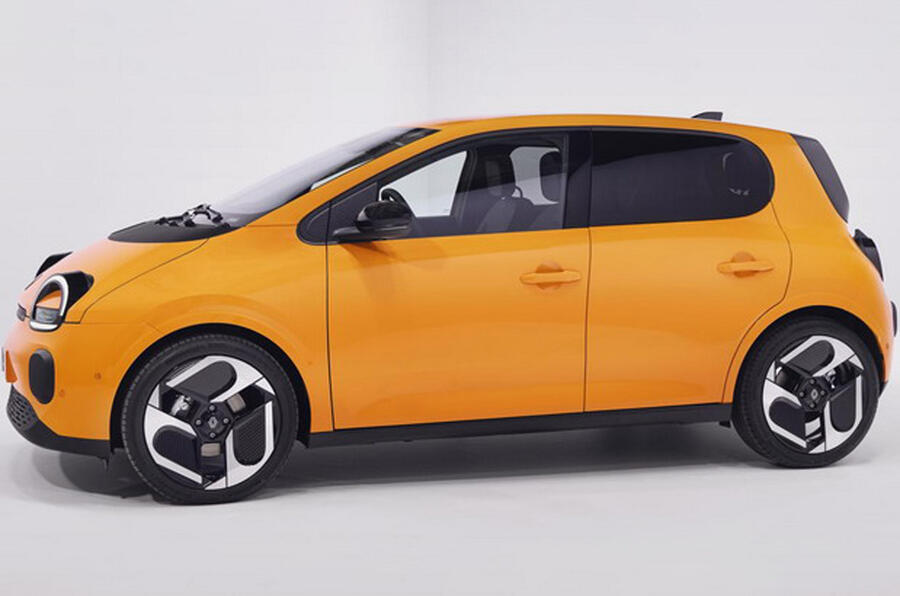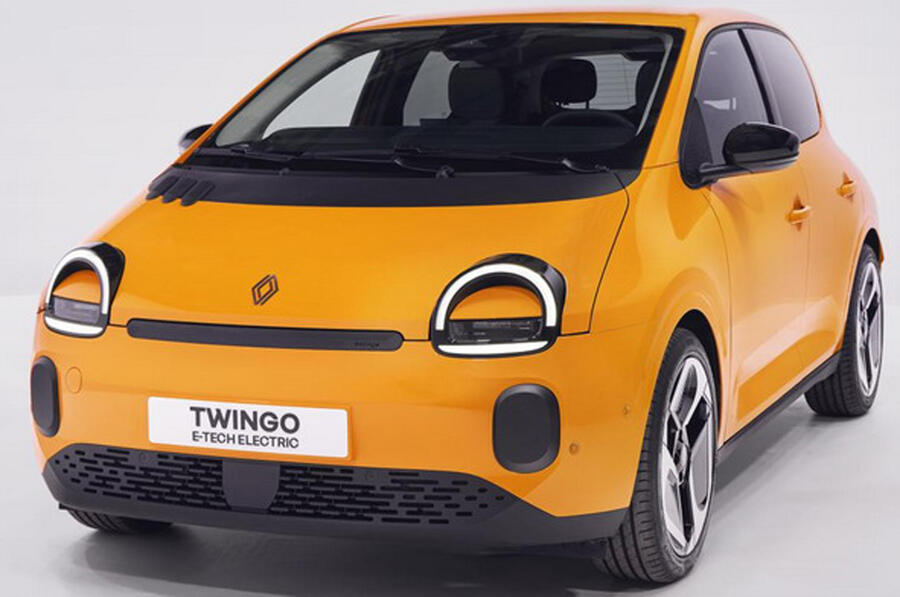New electric city car will go toe to toe with the Volkswagen ID 1
Images of the new Renault Twingo have been leaked online ahead of the car’s unveiling on 6 November.
The new, sub-£17,000 entry point to Renault’s expanding EV line-up will hit the roads in 2026 as a direct rival to the upcoming Volkswagen ID 1. It will be positioned beneath the Renault 5 and Renault 4 in the brand’s range of small EVs and has been developed in less than two years.
The leaked images posted on social media confirm the fourth-generation Twingo will stay relatively true to the funky concept car that was first shown in 2023.
Compared with the concept, the production car retains a similar bubble-like shape and features the same semi-circular light design at the front and rear in clear references to the original model.
However, some elements have been made more conventional, such as grab handles replacing the concept’s Mk1-inspired integrated pulls. It also has more ground clearance than the low-slung concept.

This is also our first look at the car’s interior and it departs slightly from the design of the Renault 5 and 4, which combine the infotainment and digital display screens in one unit.
Instead, the Twingo employs a more conventional layout of a separate display screen – likely to be the 7in unit used by sibling brand Dacia – and physical dials for the climate control.
What’s more, the dashboard features oval air vents and a panel that matches the car’s exterior colour – another overt reference to the Mk1 Twingo.
Renault previously described the cabin as “airy, cylindrical and suspended” and “designed to make life easier”.

While no details on the powertrain have been revealed yet, it’s understood to be closely related to that used in the larger Renault 5, which sits on the Ampr Small platform.
In the 5’s base spec, which costs £22,995, it offers 118bhp from a single motor and draws electricity from a 40kWh battery pack that enables a range of 190 miles. But in the interests of cutting costs, the Twingo could be fitted with an even smaller battery. For example, the Renault-made Dacia Spring uses a 25kWh pack to give a 140-mile range. Originally, Renault claimed the Twingo would offer impressive efficiency of 6.2mpkWh.
The new city car is being launched seven years after its petrol predecessor was withdrawn from sale in the UK due to declining demand (just 877 UK sales in 2018).

A key selling point for the new Twingo will be its sub-£17,000 starting price, which is part of a brief to create a “fit-for-purpose urban vehicle with no compromise”.
Notably, this undercuts the old Twingo Electric’s starting price of €21,350 (£18,624) in 2021. This variant was introduced during the model’s third generation but was never sold in the UK.
Its pricing will position it just above the £14,995 Dacia Spring and £15,995 Leapmotor T03 – the two cheapest electric cars on sale in the UK today – in a growing A-segment that will later be supplemented by the Volkswagen ID 1, Kia EV1 and a Nissan-badged variant of the Twingo.
Twingo: made in just 21 months

A sub-£17,000 electric city car is important to Renault’s growing EV ambitions, but the way it has been developed is also highly significant for the French firm. From green light to showroom, the Twingo will have taken just 21 months. For context, the current Clio took 48 months.
That drastic reduction in development time is being championed by Renault Group CEO François Provost, who took over the post vacated by Luca de Meo at the end of July. Provost has vowed to continue cutting development times as part of “an obsession with competitiveness”.
The Twingo is vital to this plan, he said, because the processes used to get it to the cusp of production will be the blueprint from now on. The firm sees this approach as essential to keep pace with an increasingly competitive market, especially with car makers from China.
Production costs will also be an important factor in bringing down the Twingo’s showroom price. Provost’s predecessor claimed the hatchback will cost 50% less to produce than a new C-segment SUV, due to a reduction in materials and the increased focus on a software-driven platform that requires fewer parts and materials.
Key to this will be the work done by Ampere, which was launched last year as a stand-alone, Europe-based company within the Renault Group. Ampere’s focus is to achieve price parity between EVs and ICE vehicles by, among other things, reducing variable costs in Renault’s production processes.
Another key facet of the Twingo is its carbon footprint. Renault claims the electric city car will produce 75%-lower CO2 emissions over its life cycle than the “average European ICE car sold in 2023”.
The Twingo’s arrival in the UK next year follows a period of uncertainty over whether there would be a right-hand-drive version. (The Mk1 was LHD only; the first RHD Twingo was the Mk2 of 2007.) Originally, Renault held back on confirming that it would be sold in the UK, given the costs of converting it to RHD. But the strong reception of the 5 pushed brand boss Fabrice Cambolive to give it the green light.
“The UK is very important in terms of product recognition, because your legacy in terms of cars is very important,” he told Autocar. “I’ve followed closely the reaction to the R5 and R4 [in the UK], and with Twingo the exercise will be even more interesting. The Twingo can be one of the solutions of mobility for the UK tomorrow.”
Source: Autocar
